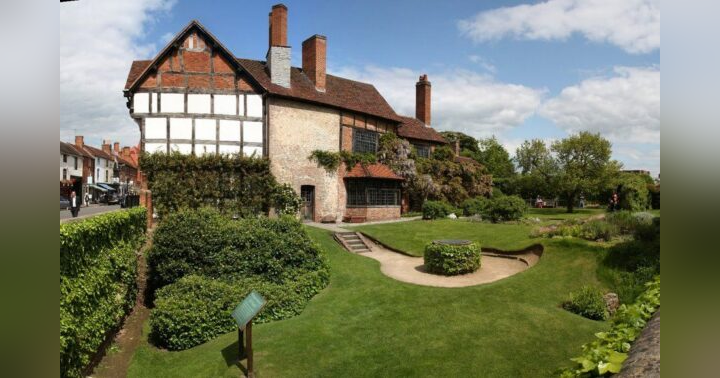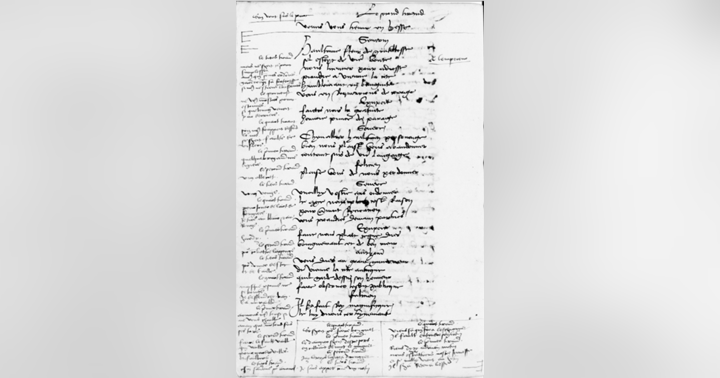The Peacham Drawing: Titus Andronicus

'Titus Andronicus' is notable for being the subject of the only contemporary illustration of a Shakespeare play. Known as the Peacham drawing, and currently in the Library at Longleat House in Wiltshire, the seat of the Marquis of Bath, the drawing appears to show the scene from Act one where Tamora pleads with Titus for the life of her eldest son. The sketched figures clearly show a regal female with two kneeling and supplicating youths behind her, while behind them stands a black skinned man brandishing a stick or sword. Standing in front of the kneeling queen is Titus dressed as a Roman senator and behind him two armed soldiers. Underneath the illustration the rest of the page is filled with quoted dialogue from the play. For some this illustration, if we can take it as a literal depiction of the stage costumes, is the most informative document we have for the type of costume used in Elizabethan theatre.
In fact the picture is not an exact illustration of that scene as Tamora’s oldest son, then a captive, is not shown and Aaron the Moor is shown as free, and possibly armed, when he was also still a prisoner at this point. Probably the illustration was always intended to be a composite image of the play, and the inclusion of Aaron makes the scene more exotic. The stick he holds may not be a sword, but the long staff that was associated with the Vice character from morality plays that I mentioned earlier. That would further indicate that Shakespeare was indeed mining quite explicitly existing stage conventions to inform the characters he was putting on stage. However, that discrepancy in the illustration has led some scholars to think that the illustration is in fact of a 1630 German version of the play. I have used the illustration in the social media postings associated with this episode so that you can take a look at it in detail.
The page is signed by Henry Peacham, who was a published writer and poet and dated in an encoded style, the meaning of which has never been proved, but is taken to mean 1595. Other annotations relating to the drawing appear to have been added by the Victorian Shakespeare scholar John Payne Collier, which only goes to complicate matters as he was also a notorious forger of Shakespeare documentation. Perhaps this is a forgery that has fooled us all, but then again, maybe not.


